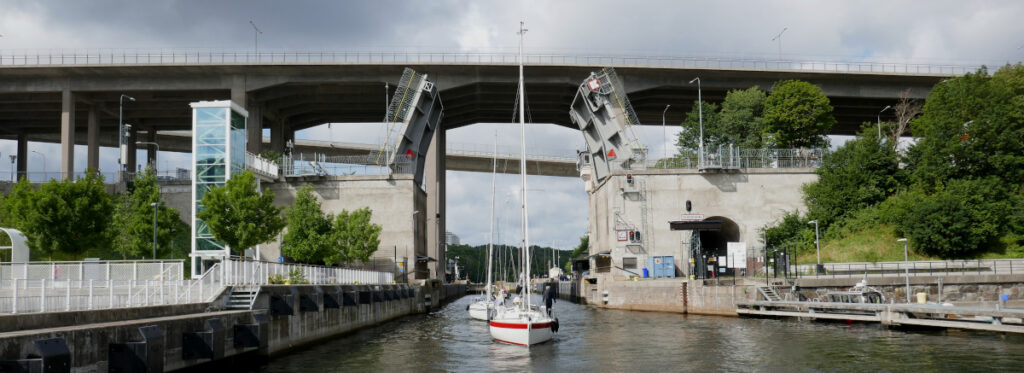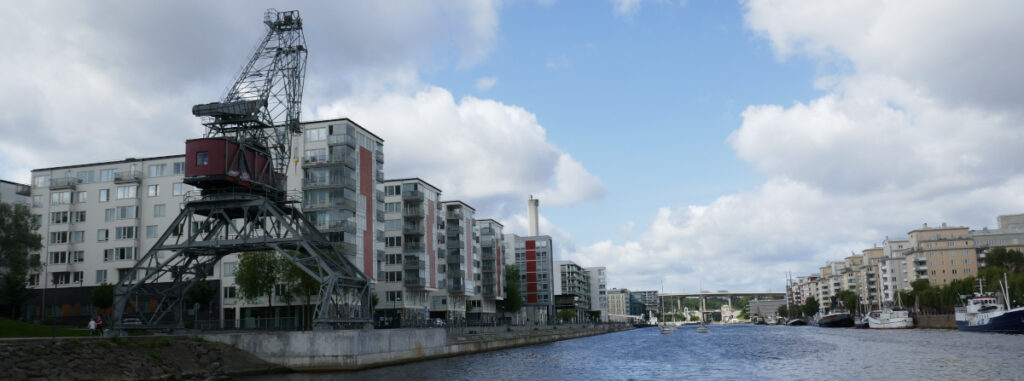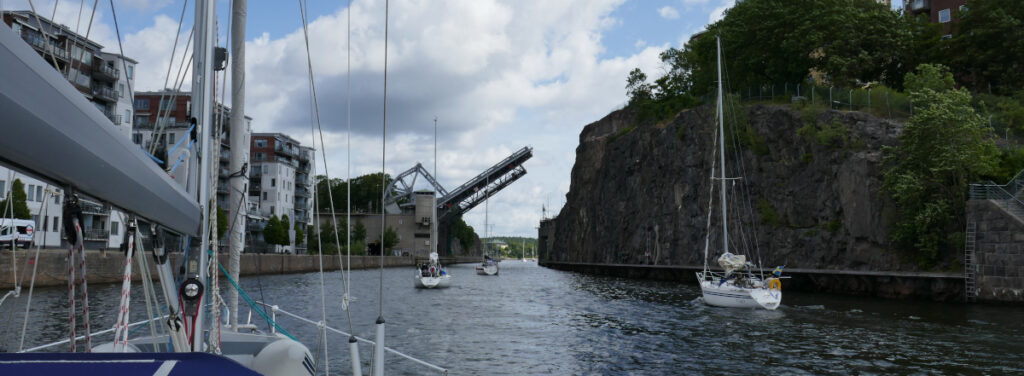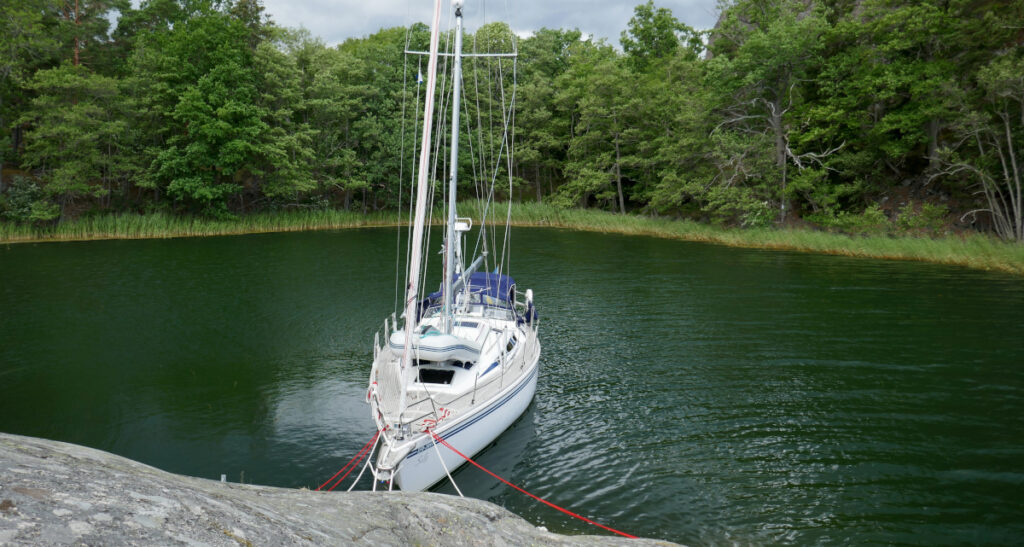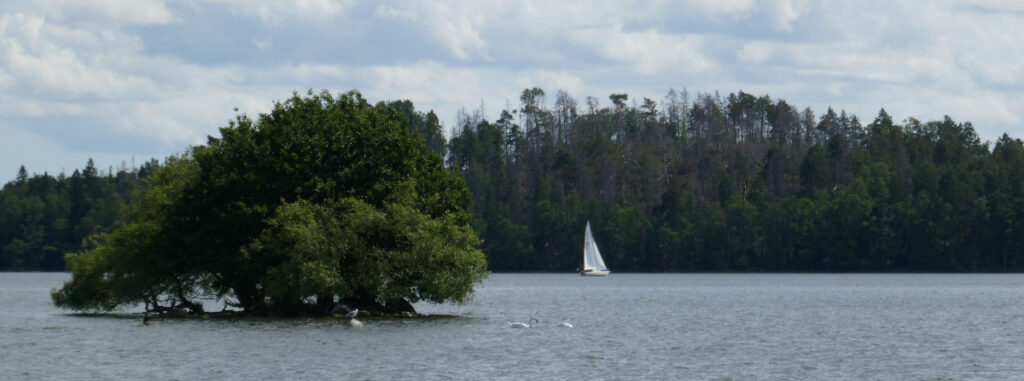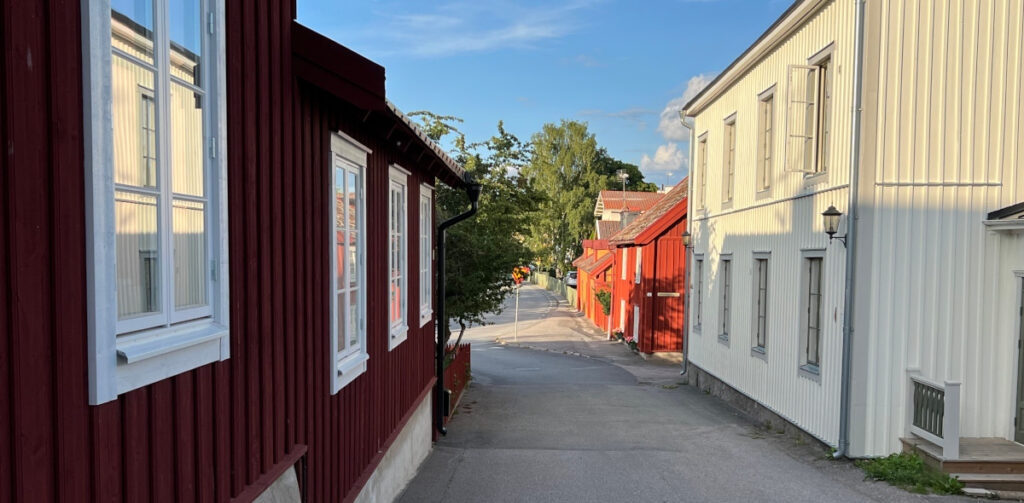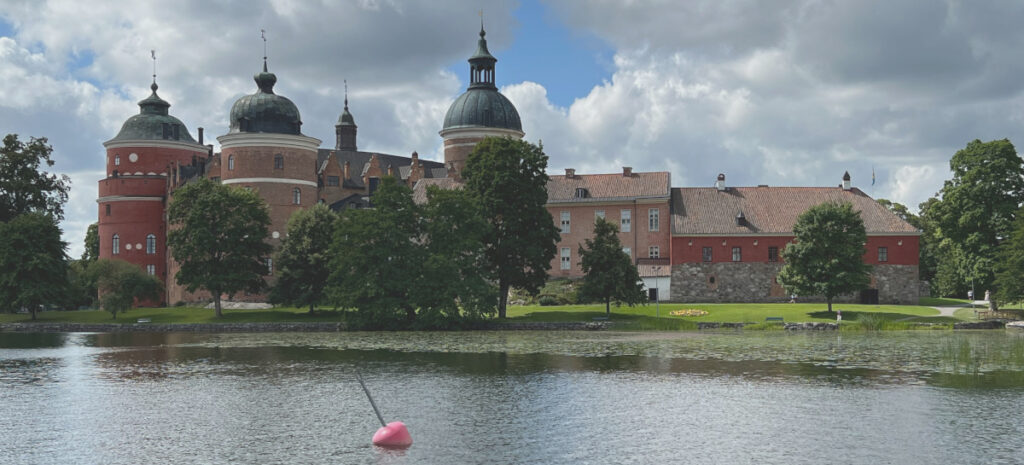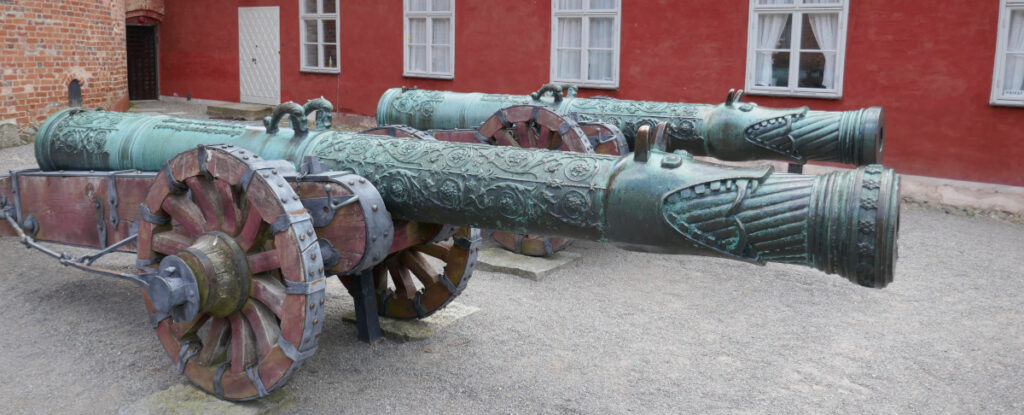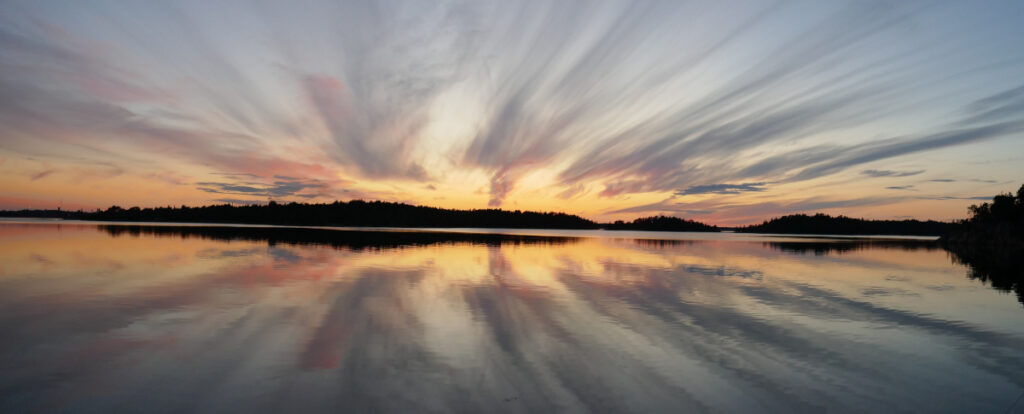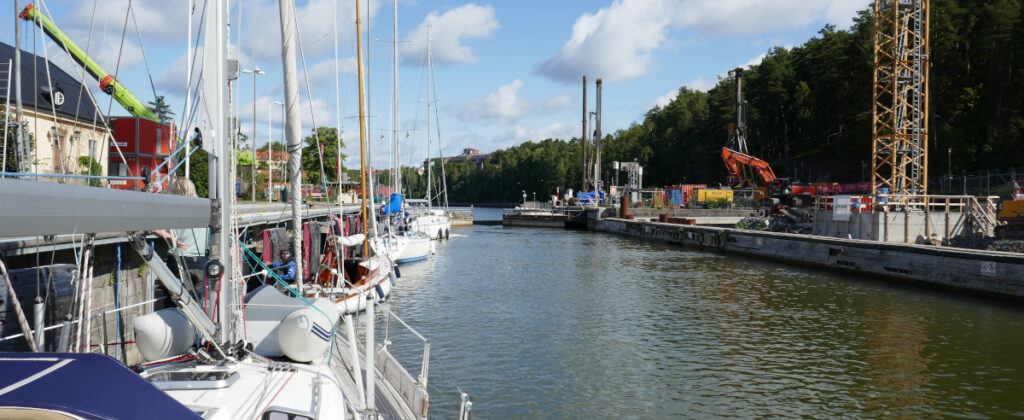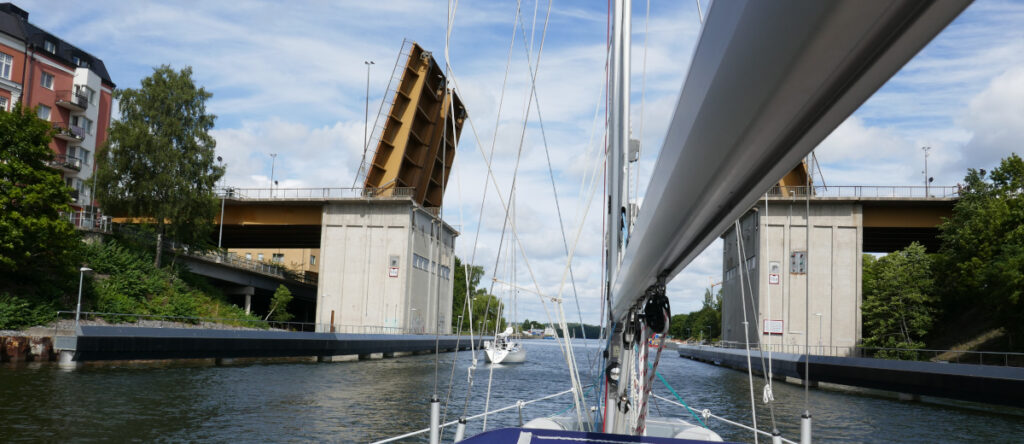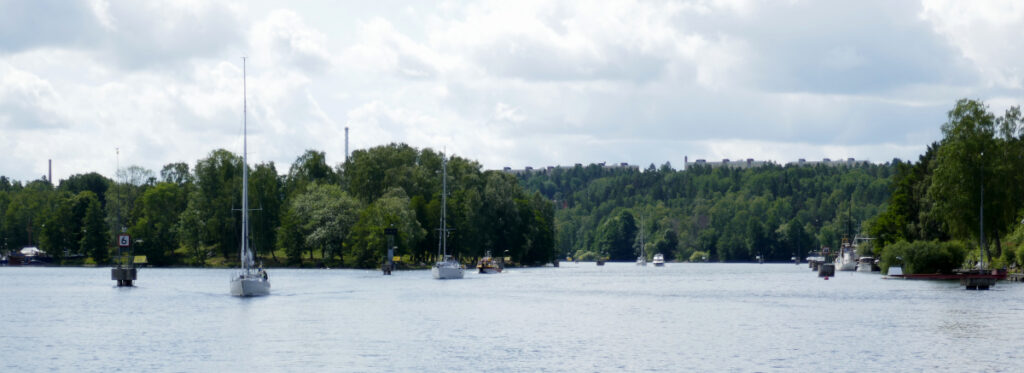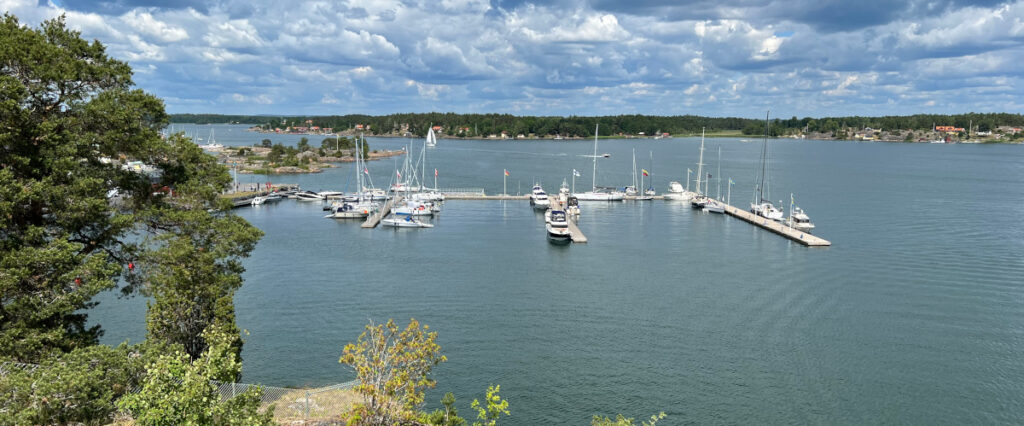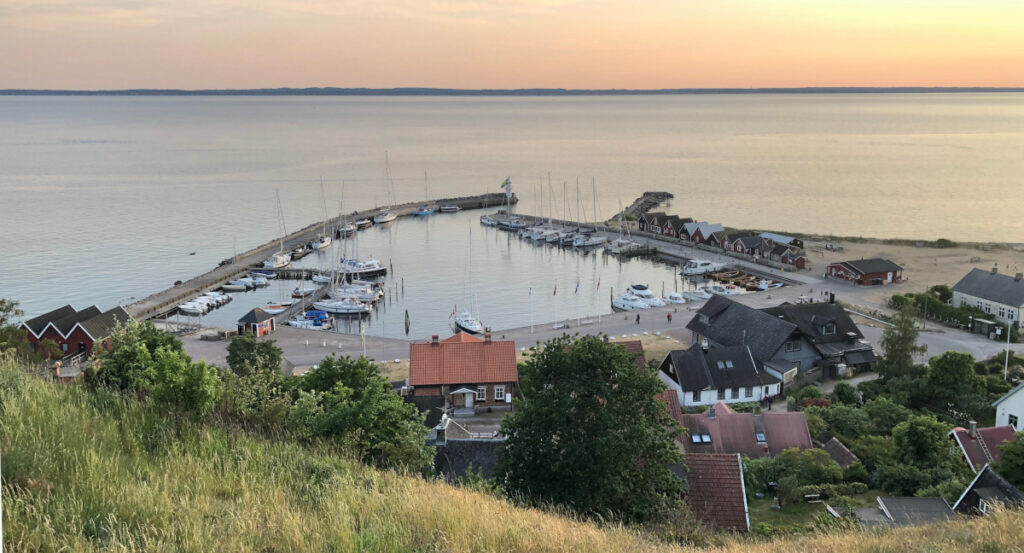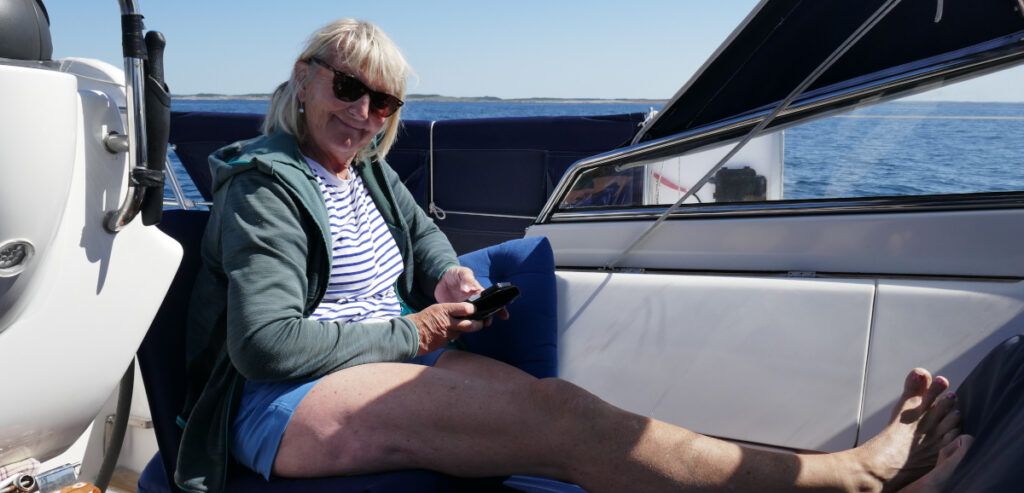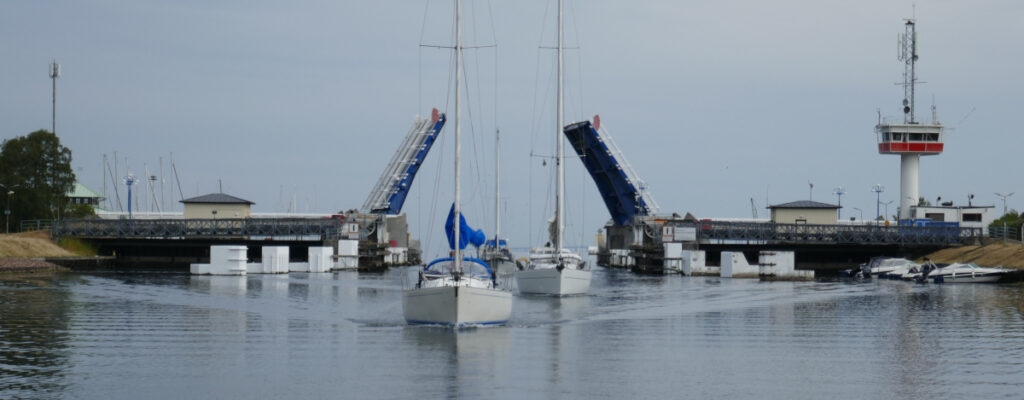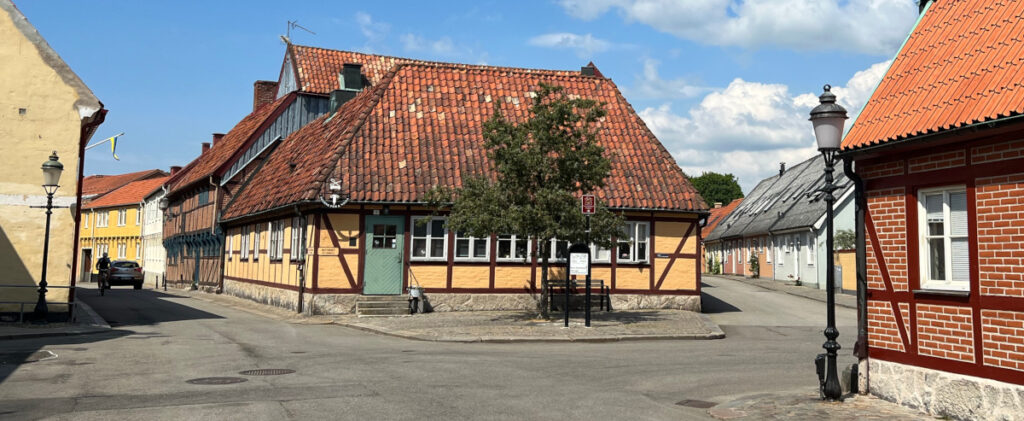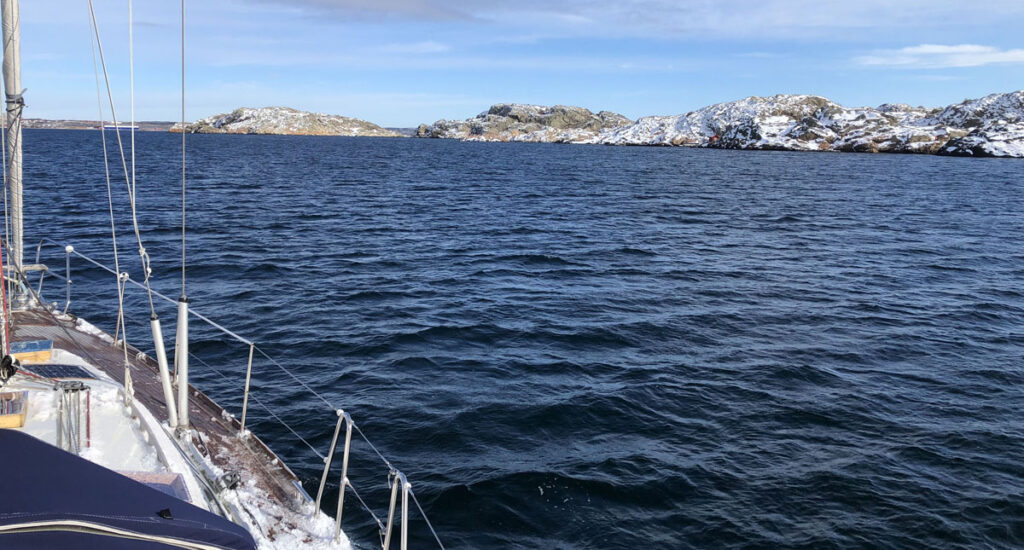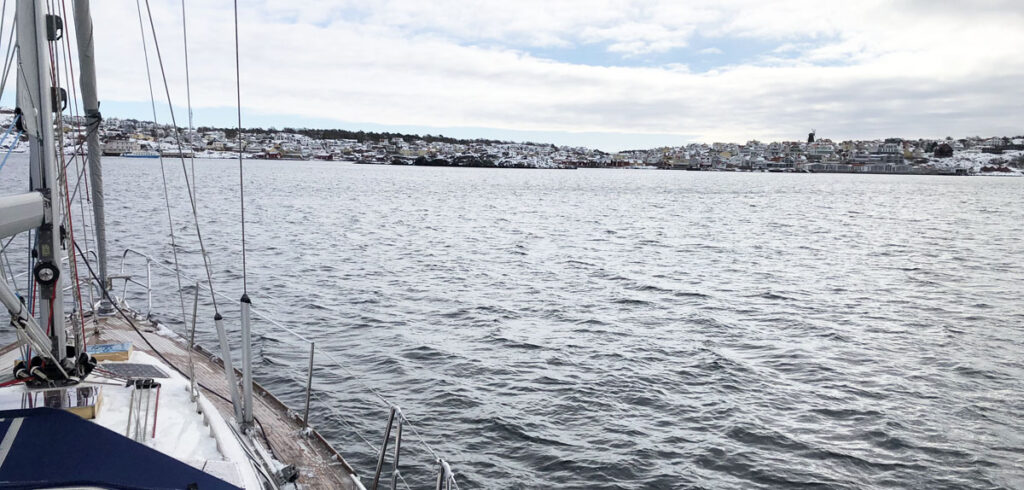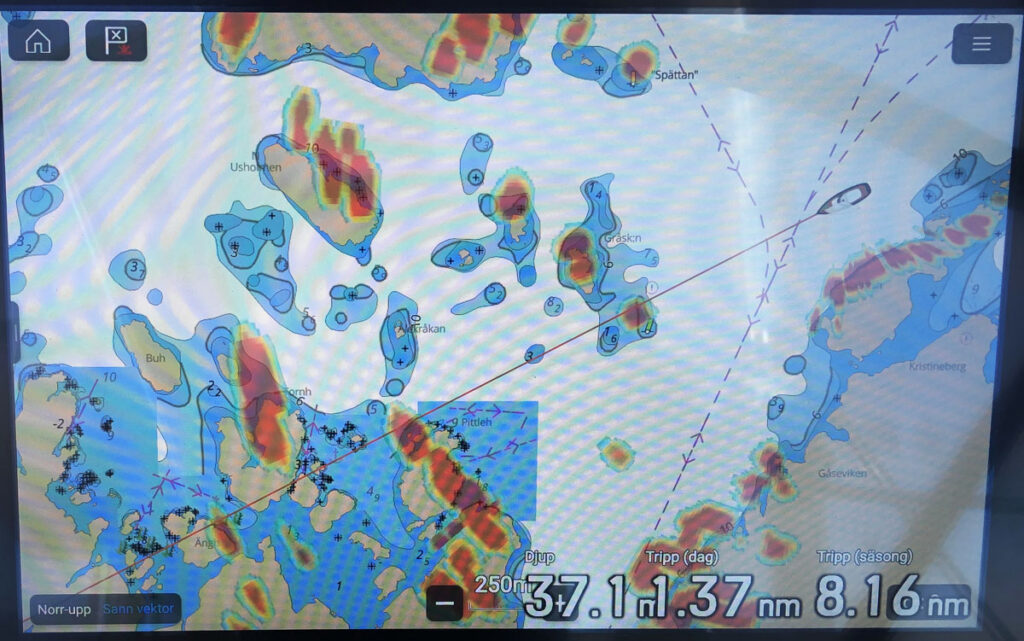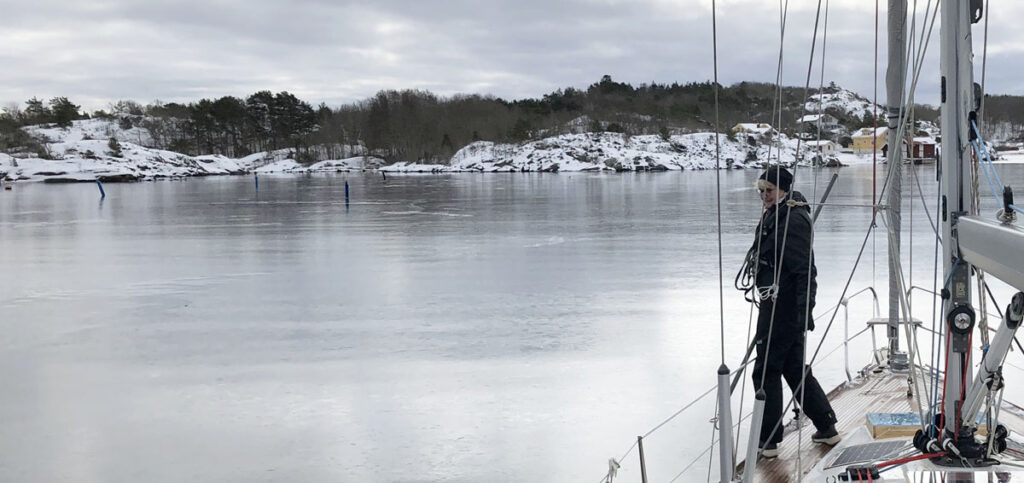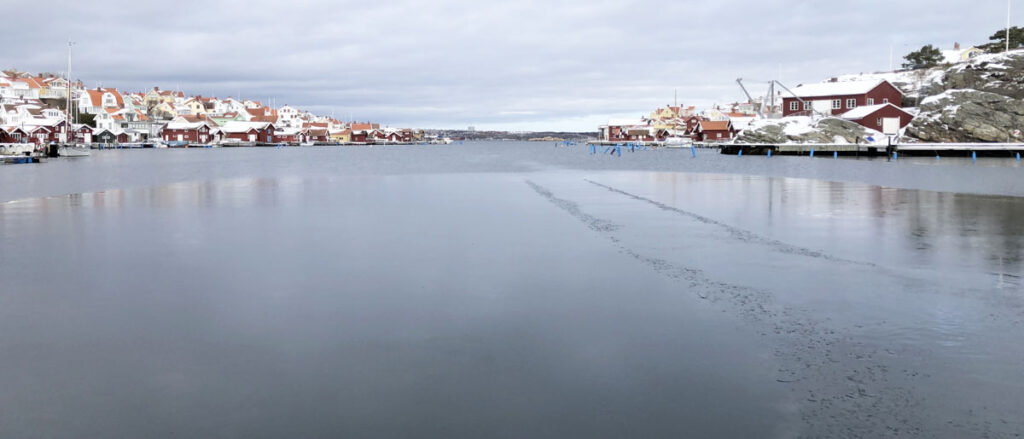We sailed south from Napoleonviken to visit friends on Gipsy Lady. At first, we had good speed and nice sailing going east but, as we had to turn south the wind headed us. We gave up after tacking for an hour in strong breeze and applied the iron genny instead.

We had a long text in the morning describing a protected shortcut through Vitsgarnssund. Hard to spot on the charts. We thought it was narrow and winding and threaded carefully with reduced speed. The following day we saw the ferryboat pass through at full steam.

Our friends live close to Horsfjarden and Musko, an area with lots of naval history. The took us for a tour in the area, starting with Musko (Muskö) canal.
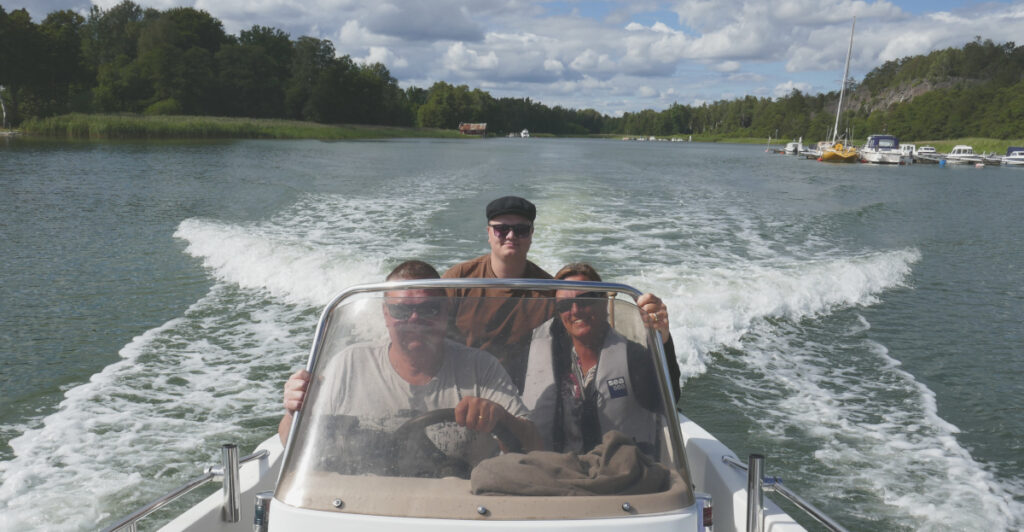
In one war with the Russiand in the 1700 century, Sweden had managed to lock the superior Russian fleet in Horsfjarden by blocking the narrow entrances. The Russians only way out was to dig a canal across the island at the narrowest part. Mostly slaves and prisoners of war were used.
They succeeded and could start bringing their ships out. As the canal was narrow, only one ship at the time could come through and they were not strong enough to battle the Swedes who were waiting outside.
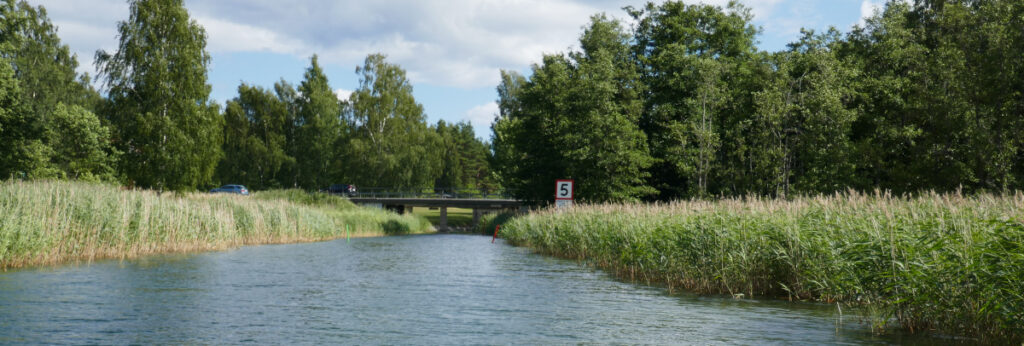
We visited an interesting old fishing homestead now museum before turning back to the municipal dock (free!) at Micklum (at the eastern end of the canal) where we had dinner together in the restaurant.
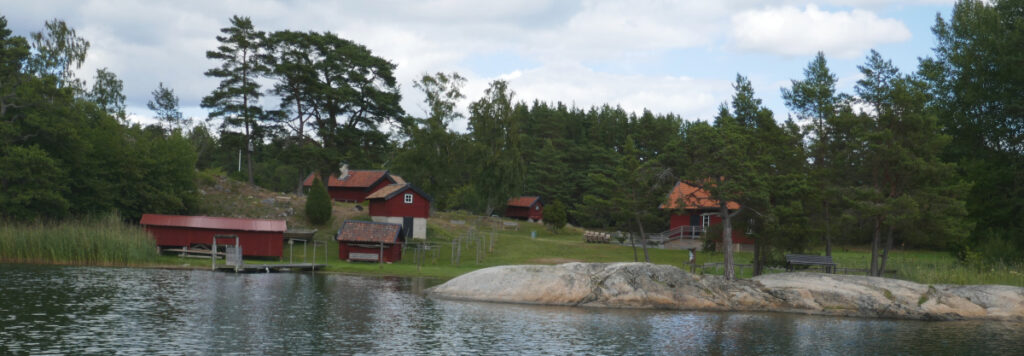
Yesterday was a long downwind sail in moderate breeze. Interrupted by a huge rain shower with fickle winds that lasted for more than an hour – we motored. The sun and following wind came back allowing us to sail into the bay of our friend from Albatros.
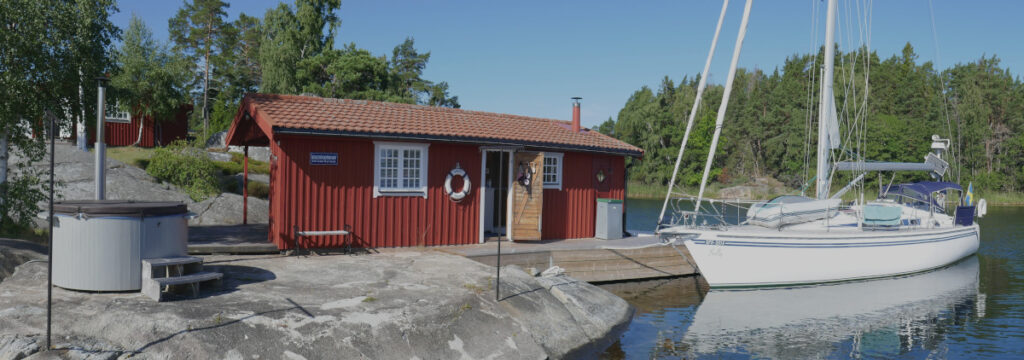
They have traded their HR to half an island in the archipelago. A lovely place and a very nice reunion. What a luxury to stay at their dock and to enjoy good company and excellent food.
We continued northwards today in the outer parts of the archipelago. This is an area more similar to what we have on the West coast. We were haunted by ominous clouds, but we managed to avoid the rain until we arrived. The heavens opened up just as we were ready to anchor.
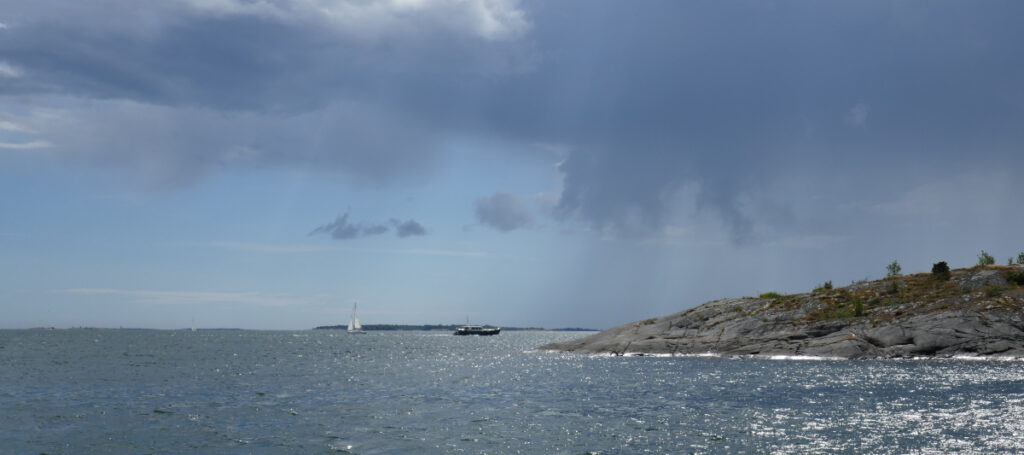
We are in the peek of the season now. Boats are everywhere and the “sailors rock” on Rodloga (Rödlöga) was filled when we came in. It may look like there is one spot left but it has a nasty submerged rock and we saw several boats fail to more there.

We anchored of and took the dingy ashore. There is a small shop (with big prices) about then minutes’ walk from the anchorage.

